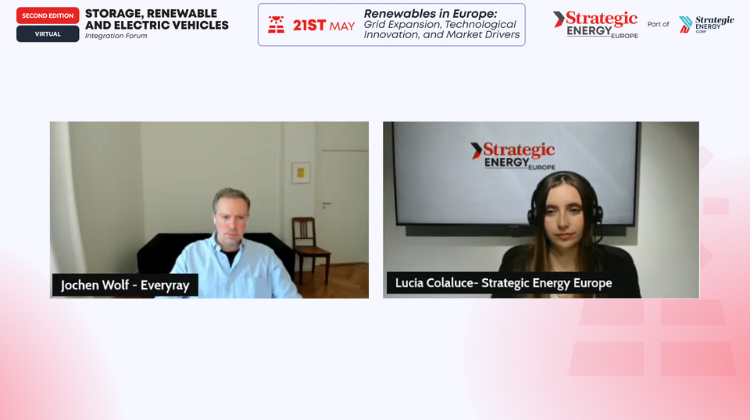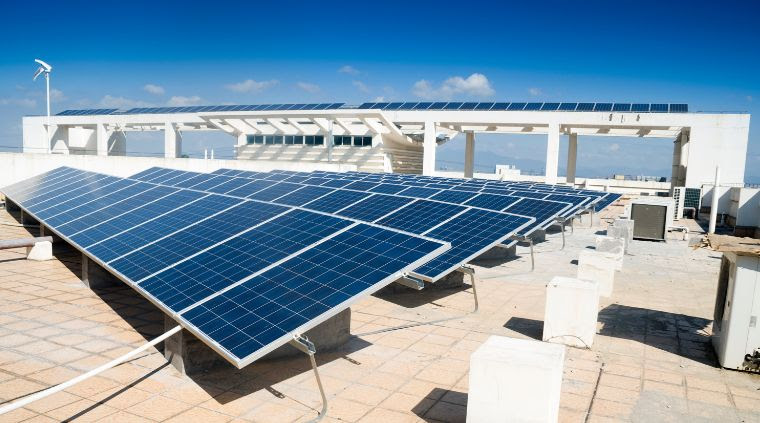The expansion of solar energy in Europe faces urgent structural barriers: outdated regulatory frameworks and a grid infrastructure still lacking full digitalisation. This is the core warning issued by Jochen Wolf, Co-Founder of everyray, during the second panel of the Storage, Renewable and Electric Vehicles Integration Forum – Second Edition, organised by Strategic Energy Corp through Mobility Portal Europe and Strategic Energy Europe.
Speaking alongside other leading figures from the solar and energy storage sectors, Wolf shared a critical perspective on the limitations preventing scalable technological deployment across Europe. Despite the sector’s maturity, structural gaps remain unresolved.
The second event of the year by Strategic Energy Corp was a two-part virtual session, co-organised with Mobility Portal Europe and Strategic Energy Europe. Strategic Energy Corp partnered with Future Energy Summit (FES) to host this event, as FES is the leading platform for renewable energy discussions in Spanish-speaking countries.
Notably, on 24 June, the third edition of FES Iberia 2025 will take place at Colegio Caminos (Auditorio Betancourt, C. de Almagro, 42, Chamberí) in Madrid. (Relive the previous edition here). The meeting will feature companies such as Iberdrola, Nextracker, Engie, Grenergy, Statkraft, Acciona Energía, Red Eléctrica, and EDP Renovables, alongside key representatives from Spain’s regional governments and Latin America. Key discussion topics will include solar and wind energy, energy storage, green hydrogen, distributed generation, PPAs, auctions, and new projects.
Analogue Grids in a Digital Age
“In many locations, we are unable to deploy the full capacity the grid could technically support because the operator is not able to manage it – the grid is simply not fully digitalised,” Wolf explains.
From EveryRay’s perspective, solar asset monitoring itself is no longer the challenge. “Monitoring solar plants is mostly a solved issue,” he notes. The real constraint lies in the fact that these systems operate in isolation and are not integrated into a digitalised grid, which dramatically reduces efficiency and inhibits innovation at scale.
Germany’s Smart Metering Lag: A Surprising Gap
Wolf highlighted Germany as a case study for this systemic gap. Despite being a frontrunner in renewable energy, the country has yet to implement smart metering on a broad scale. “It’s still missing here, whereas other European countries have already moved forward,” he states.
This absence of smart infrastructure prevents real-time management of generation and demand, and it also delays integration of key technologies like electric vehicles as energy assets within the grid.
Regulatory Uncertainty and a Lack of Alignment
Wolf also pointed to a lack of cohesion between regulatory ambitions and technical realities. “There are many wishes that have not yet been fully aligned, and the consequences of those wishes are not shared across all stakeholders,” he warns.
In his view, greater involvement from grid operators and regulators is urgently needed. “I hope they will get more involved,” he urges. A fully digital grid cannot materialise without an appropriate regulatory backbone.
Logistical Constraints and Practical Workarounds
EveryRay is also encountering delays in key components for battery energy storage systems. “MV-SKIDs for batteries now have longer delivery times than the batteries themselves,” he reports. These supply chain issues are slowing down large-scale installations, even in ready-to-deploy projects.
To mitigate these delays, the company is focusing on retrofitting batteries into existing solar parks. “We are concentrating on plants that already have secure grid connection points and infrastructure,” explains Wolf. Yet even with this strategy, the broader grid still remains a limiting factor.
Untapped Potential and Concrete Demands
“There is enormous untapped potential,” Wolf concludes. Unlocking it, however, requires more than technological readiness. Europe needs clear regulation, a fully digitalised grid, and more efficient supply chains to scale solar deployment meaningfully.
His final message is a pointed one: “Without a digital grid and suitable regulation, the energy transition will remain incomplete.”































